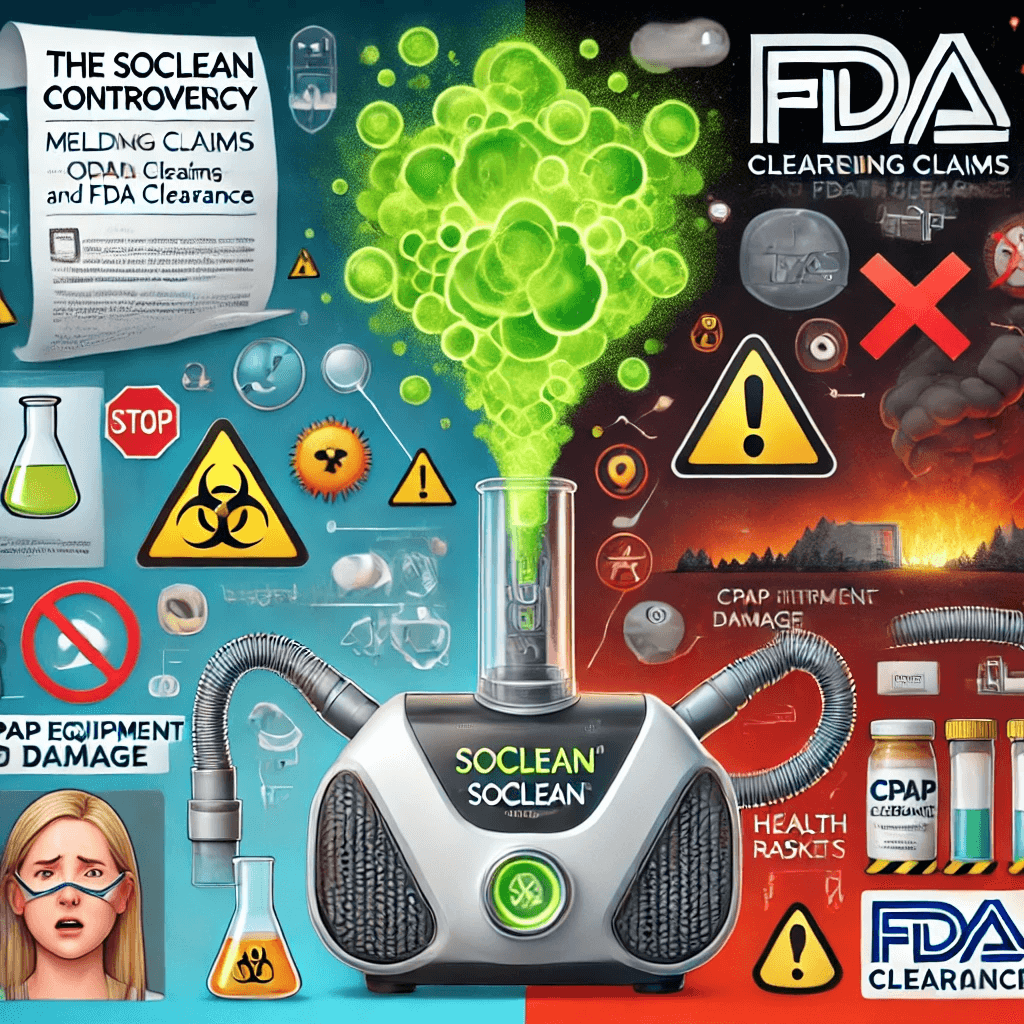Understanding the SoClean 3+ and FDA Clearance: A Comprehensive Look at CPAP Cleaning Safety
SoClean, once a dominant name in the CPAP cleaning industry, has sold over 2 million ozone-based cleaning devices, according to their own reports. However, the company has faced mounting controversy due to the toxicity of ozone exposure and its potential to damage CPAP equipment. This came to light most prominently when ozone was found to degrade the foam inside CPAP machines, including those manufactured by Philips, potentially releasing harmful chemicals into users’ airways.
Rather than halting production of their ozone-based devices after these revelations, SoClean has continued to market their products. Recently, they began leveraging the FDA clearance of their SoClean 3+ to imply the device is now safe. However, it is crucial to understand what FDA clearance actually means—and what it doesn’t.
What Does FDA Clearance Actually Mean?
The FDA’s clearance for the SoClean 3+ is based on its use as a bacterial reduction device for specific CPAP components, but only after they have been properly cleaned by the user according to the manufacturer’s guidelines. This clearance is not a blanket endorsement of the device’s safety and does not address previous concerns related to ozone exposure.
Key Facts About FDA Clearance:
• FDA Clearance ≠ FDA Approval: Clearance under the FDA’s De Novo pathway means the device is considered safe and effective for a specific use but does not indicate it is entirely risk-free or safe for all users (FDA De Novo Classification).
• Limited Scope: The SoClean 3+ was cleared for bacterial reduction, but this clearance does not resolve issues such as ozone toxicity or the device’s inability to remove physical debris like oils and dust from CPAP components.
How SoClean’s Claims Can Be Misleading
SoClean’s marketing prominently features the FDA clearance, which may lead consumers to assume the SoClean 3+ is entirely safe and effective for cleaning CPAP equipment. This is not the case. The company’s emphasis on clearance as a selling point can obscure the limitations of the device.
Key Concerns with SoClean’s Messaging:
1. Implying Comprehensive Safety: Promoting FDA clearance without clarifying its limitations may create the impression that all safety concerns, including ozone toxicity, have been addressed.
2. Overshadowing Risks: The emphasis on FDA clearance downplays ongoing concerns about residual ozone and its potential impact on respiratory health.
3. Ignoring Cleaning Limitations: FDA clearance for bacterial reduction does not mean the SoClean 3+ can replace proper washing and maintenance of CPAP equipment.
Ongoing Risks with Ozone-Based Devices
The FDA has explicitly stated that no ozone-based devices have been authorized to clean CPAP equipment due to the health risks associated with ozone exposure (FDA Guidance on Ozone Use). Even the SoClean 3+, despite its clearance, may still expose users to small amounts of ozone gas, which can:
• Irritate airways and lungs.
• Exacerbate chronic respiratory conditions such as asthma or COPD.
• Increase the risk of long-term health effects with repeated exposure (EPA on Ozone Risks).
Users may mistakenly believe the SoClean 3+ is safe to use directly after purchase, not realizing it is meant to supplement—not replace—regular cleaning practices.
The Right Way to Keep CPAP Equipment Clean
Proper maintenance of CPAP equipment remains the most effective way to ensure safety and longevity. Regular washing with soap and water removes physical debris and oils that ozone devices cannot address. For those seeking a safer and more comprehensive cleaning solution, the CSpring RediClean is the best option.
Why Choose CSpring RediClean?
• Washing and Sanitizing: Removes debris and eliminates 99.9% of bacteria and viruses.
• Ozone-Free: Avoids the risks of respiratory irritation and damage to CPAP components caused by ozone.
• Comprehensive Cleaning: Handles washing, sterilizing, and drying, making CPAP maintenance hassle-free.
Unlike ozone-based cleaners, the RediClean is a true cleaning device designed to maintain the health and functionality of CPAP equipment without toxic exposure.
SoClean’s marketing of the SoClean 3+ FDA clearance is misleading, as it implies comprehensive safety and effectiveness that the device does not deliver. FDA clearance for bacterial reduction does not address serious concerns about ozone toxicity or the device’s inability to remove physical debris from CPAP equipment.
For CPAP users, proper cleaning with soap and water remains the gold standard. For those seeking an all-in-one cleaning solution, the CSpring RediClean provides a safer, ozone-free alternative that fully addresses the hygiene and safety needs of CPAP therapy.
Protect your health and your CPAP equipment by making informed choices—don’t be misled by marketing language that oversells limited FDA clearance.








Leave a comment: